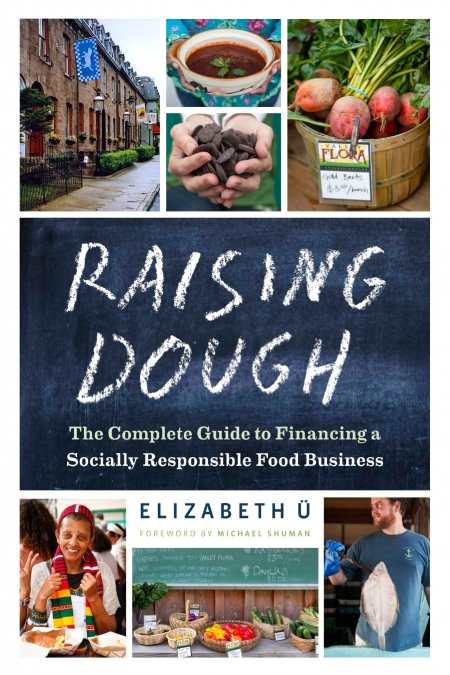Raising Dough
The Complete Guide to Financing a Socially Responsible Food Business
This guide is an invaluable aid for those who produce healthy foods and need a practical and socially responsible business model.
An idealistic worldview and a penchant for accounting are rarely found in the same person. Yet, Elizabeth Ü, executive director of Finance for Food, a nonprofit dedicated to assisting “food-system entrepreneurs,“cleverly combines the two with Raising Dough. The fact-filled, exceptionally well-organized book teaches food idealists how to crunch the numbers and market their product—from conceptual steps to the success that is the dream of every small business person.
The author makes clear that several strategies are needed in order to “raise dough.” First, she asks readers to consider their values and how important are considerations such as place, control, scale, pace, and financial success. She asks whether readers want to be tied to a location, constantly at the helm, or whether they want the business to grow larger, faster, or at a reasonable pace. Are they willing to take financial risks to achieve financial goals?
In each of the book’s four sections (Preparing for Outside Capital, It Takes a Village, Borrower Be, and Selling Equity) Ü walks the reader through scenarios that express and amplify these issues, highlighting case studies such as the Ben & Jerry’s story where, by growing, the original partners were gradually forced to satisfy stockholders and divest themselves of a brand that no longer expressed their core values. She examines everything from angel backers to government grants (example, Sustainable Agriculture Research and Educations Grants), from learning how and when to borrow, to the move from a “mom and pop” organization to a big brand. Throughout, the book speaks to balancing practicalities and principles.
Everything about this book projects professionalism, from its colorful and informative food business-themed cover, to the well-organized sections, to the footnotes and resource list at the end. Ü’s credentials as a “social-finance expert” underpin her solid writing. Her book offers an immediate sense of reliability and, indeed, the book keeps the promise implied in the introduction: “May the insights in this book help demystify the fundraising process so that you can get back to the work you set out to do.”
The first pages of each of the four parts are shaded, making them easy to locate on a thumb-through. Essential data (example, “Distinguishing Between Benefit Corporations and Certified B Corporations”) is placed in shaded blurbs within the sections. The user-friendly way that tough-to-chew information is fed to the reader will allow even a tyro to grasp the essentials. By the end of the book, using the author’s advice and factual guidelines, a budding business person should be able to describe his or her venture, draw up an action plan, and make informed choices about how the venture can grow economically and what it will give back to its creator. Though heavily weighted for food operatives, this book would help anyone start any business.
“Fortunately,” states Ü, “the field of food finance is shifting in a positive direction,” and with the help of this timely guide, new socially sensitive food business entrepreneurs can move with that trend.
Reviewed by
Barbara Bamberger Scott
Disclosure: This article is not an endorsement, but a review. The publisher of this book provided free copies of the book and paid a small fee to have their book reviewed by a professional reviewer. Foreword Reviews and Clarion Reviews make no guarantee that the publisher will receive a positive review. Foreword Magazine, Inc. is disclosing this in accordance with the Federal Trade Commission’s 16 CFR, Part 255.

